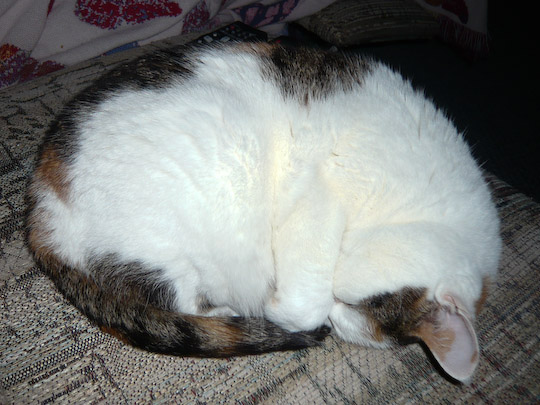 Sharyn November is the editorial director of Firebird Books, and this is an anthology of original sf and fantasy short fiction from authors with books published by Firebird. I liked that each story was accompanied by a brief note about the story by its author as well as a bio of the author.
Sharyn November is the editorial director of Firebird Books, and this is an anthology of original sf and fantasy short fiction from authors with books published by Firebird. I liked that each story was accompanied by a brief note about the story by its author as well as a bio of the author.
My usual practice with short story collections is to give a couple lines about each story. It’s been a month since I finished it (yes, I’m that far behind in getting reviews written), so we’ll see how well I remember them…
“Cotillion” by Delia Sherman: Since I picked the book up because it was the same publisher as Pamela Dean’s Tam Lin which I’d just reread, I was amused to discover that the first story was another retelling of Tam Lin, this one set in New York City in 1969.
“The Baby in the Night Deposit Box” by Megan Whalen Turner: The entire story came rushing back when I read the title. A fun little changeling story set, as the title implies, in a bank.
“Beauty” by Sherwood Smith: A plain looking princess is kidnapped by a handsome enemy of the kingdom. Based on one of her books, apparently.
“Mariposa” by Nancy Springer: At the doctor’s office, a young woman learns that the cause of her malaise is that she has lost her soul. She goes in search of it. A little on-the-nose, but entertaining in spite of it.
“Max Mondrosch” by Lloyd Alexander: A man fails to find a job despite working quite hard at the search. Odd little tale.
“The Fall of Ys” by Meredith Ann Pierce: A fable of arrogant self-interest. Feels classic.
“Medusa” by Michael Cadnum: Point of view of the title character. Deepens the story.
“The Black Fox” by Emma Bull illustrated by Charles Vess: Sassy comic book version of an old folk song. Fine example of the talents of both Bull and Vess.
“Byndley” by Patricia A. McKillip: Complex tale about a man trying to get back into Faerie.
“The Lady of the Ice Garden” by Kara Dalkey: The Snow Queen reimagined in feudal Japan.
“Hope Chest” by Garth Nix: Another one easily remembered from its title. A baby is left on a railway platform in a small town. Along with the usual cryptic note, this baby comes with a steamer trunk that no one can open. When the baby turns 16 things get interesting.
“Chasing the Wind” by Elizabeth E. Wein: A young woman is flown across Kenya in a single-engine plane in 1950. No traditional fantasy elements here, but the world of a bush pilot is pretty fantastical in a different way.
“Little Dot” by Diana Wynne Jones: Story about a wizard, a beast, and a cat told from the cat’s point of view.
“Remember Me” by Nancy Farmer: A family road trip in the desert, an out-of-place sister finds her place.
“Flotsam” by Nina Kiriki Hoffman: A lost boy shows up at the neighborhood basketball court. Really really lost. I really liked the characters in this one.
“The Flying Woman” by Laurel Winter: Two magical children are abandoned on an island and visited by a flying woman.
I liked all but a couple of them. Good collection.
 This long-out-of-print novel has been re-released by Firebird Books in a handsomely produced trade paperback. I’ve still got my old mass-market paperback around here somewhere, but it’s nice to have a good reading copy of this book.
This long-out-of-print novel has been re-released by Firebird Books in a handsomely produced trade paperback. I’ve still got my old mass-market paperback around here somewhere, but it’s nice to have a good reading copy of this book.
 This book comes before Widdershins in the continuity of de Lint’s Newford stories. That doesn’t matter too much as you’re reading either story, but there are some relationships that begin in this book that make Widdershins make a little more sense.
This book comes before Widdershins in the continuity of de Lint’s Newford stories. That doesn’t matter too much as you’re reading either story, but there are some relationships that begin in this book that make Widdershins make a little more sense. As with many of Sawyer’s science fiction novels, this one starts off with a purely human problem. Heather Davis and Kyle Graves have been separated for nearly a year when their daughter Becky brings them together to make an announcement that threatens to sunder the family completely. This family drama is accompanied by a parallel drama in Heather’s work where she is part of a global effort to decode an alien transmission received from Alpha Centauri A. Heather has a breakthrough and determines that the message is instructions for building a machine. When she constructs it she discovers that the machine will affect not only human society, but also her own family in far-reaching ways.
As with many of Sawyer’s science fiction novels, this one starts off with a purely human problem. Heather Davis and Kyle Graves have been separated for nearly a year when their daughter Becky brings them together to make an announcement that threatens to sunder the family completely. This family drama is accompanied by a parallel drama in Heather’s work where she is part of a global effort to decode an alien transmission received from Alpha Centauri A. Heather has a breakthrough and determines that the message is instructions for building a machine. When she constructs it she discovers that the machine will affect not only human society, but also her own family in far-reaching ways.


